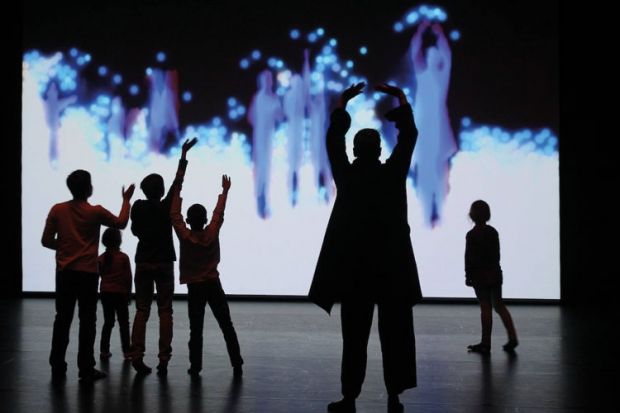An interactive fibreglass rhino called Erica, a collaborative graphic novel about low-carbon pasts and futures and a choir dedicated to reviving the forgotten music of 16th-century nuns were just three of the 23 university projects shortlisted for the first national Engage Competition, which aims to reward academics for work in engaging with the public.
The judges chose winners and runners-up in eight categories, from more than 230 entries, for a ceremony held at London’s Natural History Museum on 11 June.
In the science, technology, engineering and maths category, the prize went to the University of Edinburgh’s “night of immersive theatre”, where “an unknown pathogen ravages Scotland’s capital”. Surrounded by “bloodthirsty ambling beasts”, the few remaining uninfected citizens at “The Enlightenment Café: Deadinburgh” could seek the help of immunologists as they faced a terrible dilemma: whether to “cull the infected, search for a cure, or destroy Edinburgh”.
Among established projects, the judges favoured the University of the West of England and University of Bristol’s joint danceroom Spectroscopy programme, which allows participants to “step into an interactive atomic simulation”, and so experience – and then manipulate – often startlingly beautiful images of themselves as energy fields.
Presenting the awards, which were organised by the National Co-ordinating Centre for Public Engagement, television presenter Alice Roberts, professor of public engagement in science at the University of Birmingham, urged universities to ensure that “public engagement is not detrimental to researchers’ careers”. But she also advised academics to “avoid arrogance” and to “never lose the thread of your argument by taking steps out”.
Although praising a range of projects engaging schoolchildren, mental health service users, prisoners and Parkinson’s patients, the judges selected Cardiff University’s CAER Heritage Project as overall winner.
This focused on a prehistoric monument in the city known as the Caerau Hillfort, surrounded by housing estates on three sides. The archaeologists and historians promoted participation through community excavations, exhibitions, adult learners’ courses and heritage trails. Two participants who went up to receive the award wore shirts saying “I dig Caerau”.
Register to continue
Why register?
- Registration is free and only takes a moment
- Once registered, you can read 3 articles a month
- Sign up for our newsletter
Subscribe
Or subscribe for unlimited access to:
- Unlimited access to news, views, insights & reviews
- Digital editions
- Digital access to THE’s university and college rankings analysis
Already registered or a current subscriber? Login





